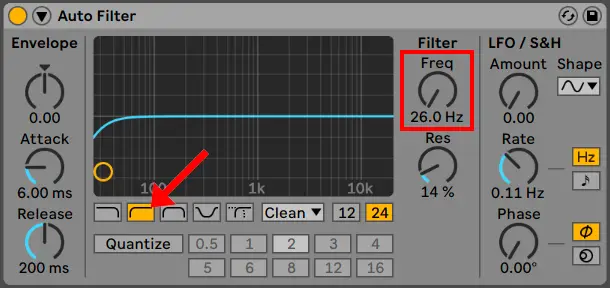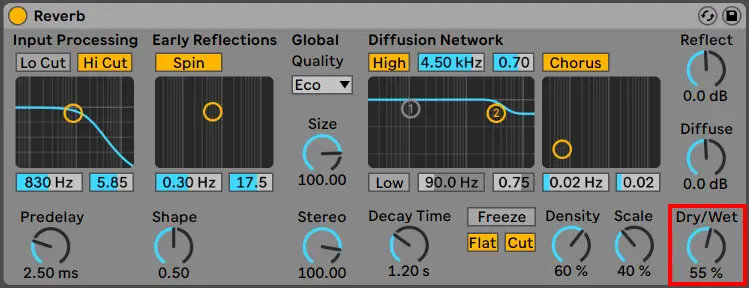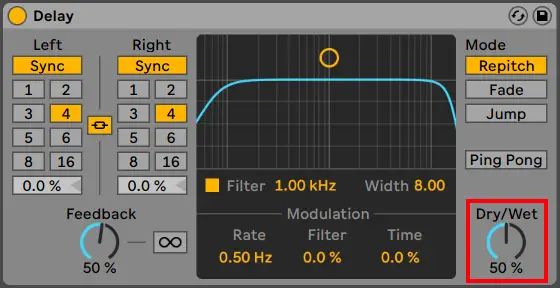Build-ups are one of the most essential components of an electronic composition. For many producers, the build-up can be the most difficult part of a song to create. Complimenting your drop with an exciting and effective build-up doesn’t need to be difficult.
This informative guide is the ultimate resource for creating build-ups in any genre of dance music. We will be deconstructing the elements of a successful build-up and learning new ways to create and improve the quality of your build-ups.
- | What Is A Build-Up?
- | How Many Bars Should A Build-Up Be?
- | Elements Of A Build-Up
- | Automation
- | How To Improve Your Build-Ups
Without further ado, let’s dive in!
| What Is A Build-Up?
In Electronic Dance Music, a build-up is the section immediately before the chorus (or drop) of the song. Build-ups are used to create tension and increase expectation, helping to maximise the impact of the main body of a song – the drop. A good build-up creates excitement, anticipation and suspense within the listener. A good build-up is key to a good drop.

| How Many Bars Should A Build-Up Be?
Build-Ups in Electronic Dance Music tend to have a length of 4, 8, 16 or 32 bars. The length of a build-up can depend on a variety of factors including the sub-genre of EDM, the overall duration of the track and the song’s structure.
Typically, genres intended for radio play like Pop, Tropical House or Dance have shorter build-ups whereas, genres that are played at clubs or festivals such as Tech-House, Techno or Big Room tend to have longer build-ups.
A useful tip is to reference tracks similar to yours to get an idea of how long your build-up should be.

| Elements Of A Build-Up
There is no right or wrong way to create a build-up. Every build-up is different. The goal is to use elements that compliment the chorus (or drop) and each other in order to create a sense of anticipation and maximise the impact of a song’s peak section. Traditionally, build-ups are assembled using a combination of the following elements:
Uplifters
Also known as sweeps, uplifters are a sound effect that rise in volume or pitch, sometimes both. They are one of the most used elements across all genres of electronic music. Uplifters come in a variety of shapes and forms. They often consist of an edited and automated white noise sample but can also be made using audio such as synths, pads, percussion or vocal effects.
As you can see from the waveform below, the increasing volume signifies the nearing of the chorus (or drop), putting the listener in a state of expectancy.

Snares/Claps
Snares and claps are a defining feature of a House/Tech-House build-up. They are a dominant mid-high frequency element that creates tension resolved by the bass frequencies of the chorus.
A common technique in EDM is to half the rhythmic subdivision of the snare/clap pattern multiple times throughout the build-up (from 1/4th, to 1/8th and then to 1/16th). This technique helps increase suspense and alerts the listener that the climax is approaching. Below is an example of a 4-bar snare build-up.

Synths
Synths are the main melodic and harmonic elements of a build-up and play a role in defining a producer’s style and sound. Melodies, chords and synth one-shots can help provoke a particular emotional response. Whether it’s keys, a pad or a lead, synths provide a tonal element to a build-up and help add interest to an entire arrangement.

Vocals
Vocals can help accompany the emotional intent of an instrumental, as well as convey a particular message or idea. They provide a vocal element from an otherwise instrumental arrangement. Vocals in music are often the most catchy and memorable element of a song as they allow listeners to participate in the listening experience.

Fills
Whether it’s a short vocal phrase, a drum fill or a synth pattern, fills are the concluding element of a build-up. They help create a recognisable separation between sections and tells audiences to be expecting the chorus (or drop). Fills traditionally have a duration of 1-4 beats and can even contain sounds or rhythms not heard in the other sections of the arrangement.

Other Elements
Build-ups don’t have to be limited to the elements listed above. Producers from all sub-genres of EDM have found unique ways to create full and effective build-ups using all manner of audio samples. Some additional elements you might consider incorporating into your build-ups include downlifters, percussion, cymbals, vinyl crackle, audience or talking samples, sirens, etc.
| Automation
Automation is the next step in the process of creating a build-up. It allows parameters like pitch, reverb or delay to evolve throughout the duration of a build-up. Automation is crucial for a successful build-up. It can be applied to individual tracks, groups or the master track. Automation can be used in a variety of ways but below are some of the most popular automation techniques used in popular EDM build-ups:
How To Automate Pitch
To automate pitch on an audio clip, start by double-clicking the top section of the clip on Arrangement View to open the clip view. Next, ensure Warp mode is enabled. Select the ‘Show Envelopes Box’ icon in the bottom left and under the ‘Envelopes’ heading, select ‘Clip’ and ‘Transposition’. You can now draw in pitch automation over the audio clip waveform.

To automate pitch on a MIDI clip, start by double-clicking the top section of the clip on Arrangement View to open the note editor. Next, select the ‘Show Envelopes Box’ icon in the bottom left and under the ‘Envelopes’ heading, select ‘MIDI Ctrl’ and ‘Pitch Bend’. You can now draw in pitch automation over the MIDI notes.

How To Automate Highpass Filter
To create highpass filter automation, start by navigating to Live’s Browser. Next, select the ‘Audio Effects’ category and drag the ‘Auto Filter’ plugin onto the target track. Select the Highpass filter shape below the X-Y controller then adjust any additional parameters (resonance, envelope etc.). Finally, right-click the ‘Freq’ knob on the right of the plugin and select ‘Show Automation’. You can now automate the highpass filter on the target track within the arrangement view.

How To Automate Reverb
To automate reverb, head to the ‘Audio Effects’ category in Live’s Browser and drag the ‘Reverb’ plugin onto the target track. Next, adjust the parameters on the Reverb plugin to your liking (decay time, pre-delay etc.). Lastly, right-click the ‘Dry/Wet’ knob in the bottom right corner of the plugin and select ‘Show Automation’. You can now automate reverb on the target track within the arrangement view.

How To Automate Delay
To automate delay, head to the ‘Audio Effects’ category in Live’s Browser and drag one of Live’s Delay plugins onto the target track. Next, adjust the parameters on the Delay plugin to your liking (feedback, ping pong etc.). Lastly, right-click the ‘Dry/Wet’ knob in the bottom right corner of the plugin and select ‘Show Automation’. You can now automate delay on the target track within the arrangement view.

| How To Improve Your Build-Ups
Download New Samples
If you have exhausted your sample pack library or you simply can’t find the perfect element for your build-up, try downloading some more sample packs. New samples spark new ideas and increase your options when finding the best components for your build-ups.
Replicate Popular Build-Ups
One of the best ways to make your build-ups sound more professional is to replicate the structure, automation techniques and samples used in build-ups of popular songs. This technique will help you develop a portfolio of successful build-up ideas to mimic in your productions.
Sampling
Another great way to improve the quality of your build-ups is by sampling elements from published tracks. Whether it’s a single snare drum, a kick or a fill, sampling is a great way to introduce tried and tested elements into your own build-ups. Always be mindful of avoiding copyright infringement.
Practice Makes Perfect
Like all aspects of music production, practice makes perfect. Failure is as important as success. By frequently creating and experimenting with new sounds and ideas, you develop the ability to produce professional sounding build-ups in every project.

Want To Know More?
Here at Live Aspects, we have dozens of useful lessons and tutorials created to enhance your music production skills and help speed up the learning process. You can access our huge range of music theory lessons and production tips and tricks here.
1 comment
Appreciating your tutes! Thanks for sharing the knowledge